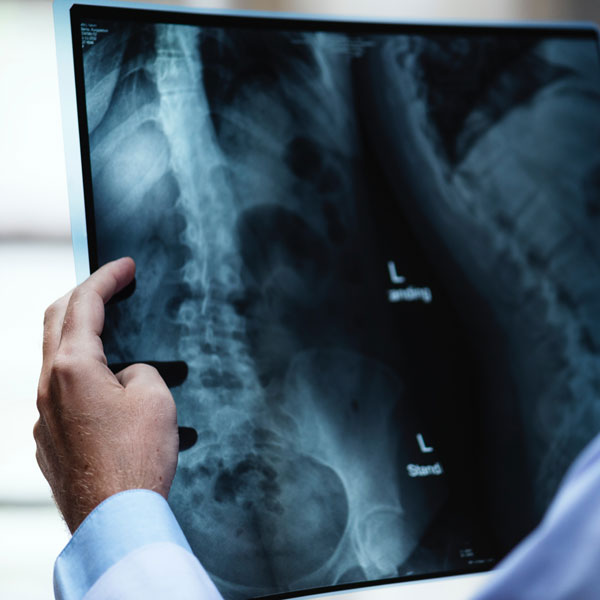X-ray/Fluoroscopy
X-ray
X-ray refers to procedures that use standard x-rays to view parts of the body. This type of exam includes conventional x-rays, tomography (CT), and fluoroscopy.
Conventional radiography (X-ray) is a simple and painless procedure that provides the radiologist with a fixed, still image of the bony and soft tissue anatomy. On average, an x-ray takes 10-20 minutes.
Fluoroscopy
Fluoroscopy, on the other hand, is an enhanced X-ray that produces a continuous or live (real-time) image on a monitor. Through the use of a fluoroscope–an instrument with a fluorescent screen–physicians are able to get a better picture of internal structures such as the kidneys, gallbladder, and digestive track.
In some cases, a contrast agent (dye) may be used to guide the procedure. This special dye helps produce images in greater detail than traditional X-ray film. Radiocontrast agents are usually barium or iodine-based. It is important to let your physician know if you have an allergy to either one of these agents.
Fluoroscopy can be used in a variety of situations, including:
- Orthopaedic surgery
- Catheter insertion
- Enemas
- Urological surgery
- Blood flow studies
- Angiography of the leg, heart, and cerebral vessels
- Implantation of pacemakers
X-ray/Fluoroscopy Locations
What to Expect
All X-ray procedures, including fluoroscopy, carry some risks. Radiation doses can vary depending on the individual procedure the patient is having. Fluoroscopy can result in relatively high radiation doses, especially for complex interventional procedures (such as placing stents or other devices inside the body) which require fluoroscopy be administered for a long period of time.
Some fluoroscopy procedures may be a quick outpatient procedure, while others may require a longer hospital stay. Once the procedure is done, a radiologist will analyze the images and send a report to your primary care physician, who will discuss the results with you.
Triad Radiology offers X-ray/Fluoroscopy procedures at a variety of locations, including hospitals, imaging centers, and clinics. Contact us if you want to learn more or schedule an appointment.



